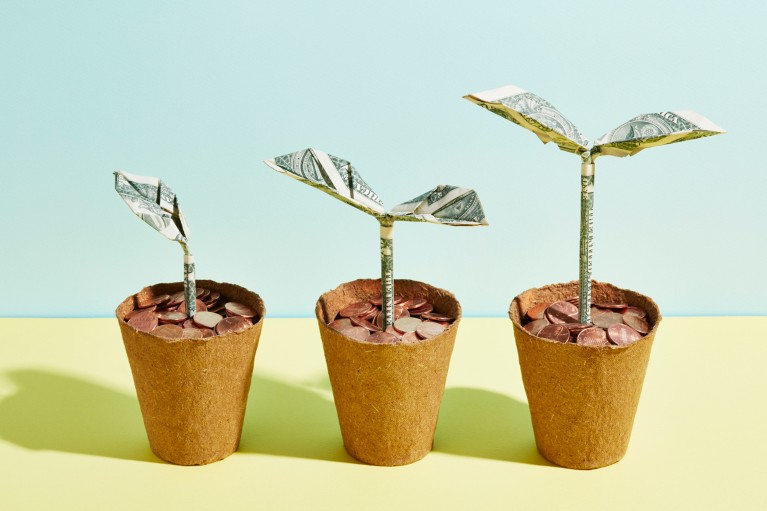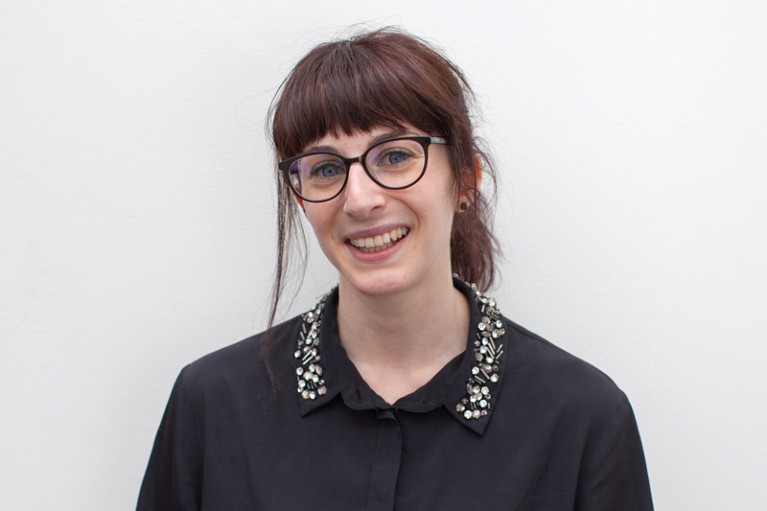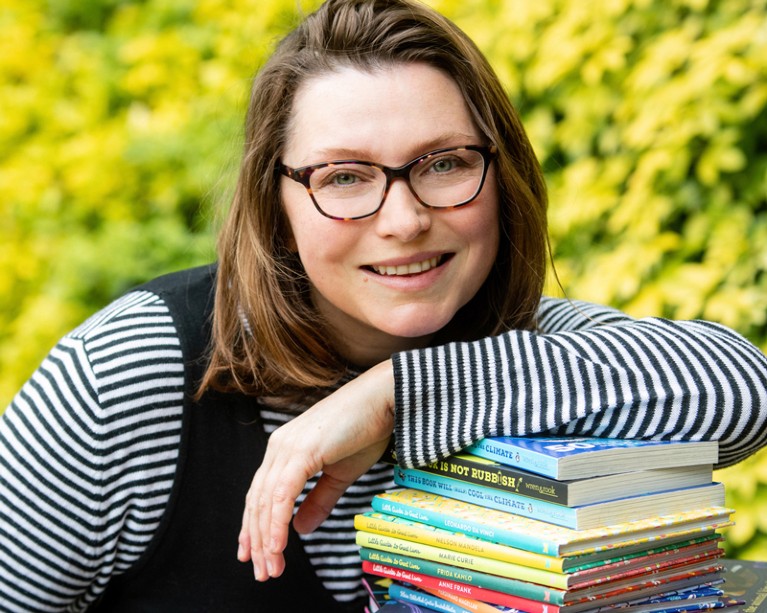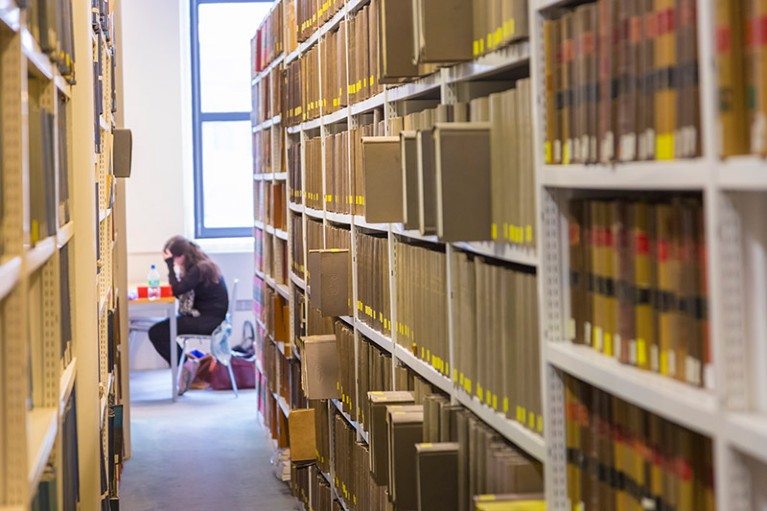[ad_1]

Credit: Richard Drury/Getty
“Lots of our members call us ‘the magic money tree’,” says Alison Baxter, head of communications for the Authors’ Licensing and Collecting Society (ALCS), based in the United Kingdom. “They don’t really understand where the payments come from,” she says, “but they like getting them.” The ALCS is one of a global group of collecting societies and agencies that compensate authors when their works are copied or shared after publication. This year, the ALCS says, it is due to pay out more than £45 million (US$56 million) and, when money is earned from the use of academic textbooks and research papers, the copyright holders who stand to benefit are often scientists.
ALCS members who claimed for journal or magazine articles this year received around £450 each, on average. Although the sums any individual author is entitled to could be much less than that, the fact remains that researchers who are not members might be missing out on their share.
Collecting societies vary in their exact function, but their common goal is to ensure that authors are remunerated when, for example, a company prints out part of a book to circulate among its staff, or a research paper is printed out and distributed to students. The societies generate income by selling licences that give blanket permission to reproduce copy-righted material, or by gathering payments for the use of specific works.
They then share that money among their members on the basis of which activities generated the funds. Although this is a well-established source of income for many authors and journalists, among researchers there is less awareness of its existence. “My oldest friend is a scientist,” Baxter says, “and it took me a while to convince her that she could claim for her papers by joining the ALCS.”
One reason for a lack of take-up might be cynicism among scientists, and a misapprehension about fraud. “Everyone I have told thinks it’s a scam,” says Nicole Melzack, who is studying for a PhD in energy storage at the University of Southampton, UK, and has been a member of the ALCS since last year. “It’s really hard convincing people that it’s not, but, as long as you own the copyright, which I think most people will for their journal articles, then you have nothing to lose by signing up.”
Careers Collection: Publishing
For those who do, collecting societies can provide a welcome and regular cash flow that requires little or no effort to maintain. Yashar Mousavi, a senior analytical engineer at American Axle & Manufacturing, an automotive engineering firm based in Detroit, Michigan, joined the ALCS as a PhD student at Glasgow Caledonian University, UK, in 2020. “I’ve been paid twice so far, each time between £400 and £600, for papers published in the UK in the journal Chaos, Solitons & Fractals on the topic of fractional calculus and optimization,” he says. “The size of payment depends on many factors, such as the amount of money the ALCS has collected, the number of papers I have shared with them, the percentage of my contribution to the paper, and the journal’s impact factor.”
Even early-career researchers who do not have many publications can benefit, says Melzack. “In 2023, I had one paper published in Frontiers in Energy Research and made £464, and this year I published five papers and got £357,” they say. “It’s great, given the general cost of living and the fact that the academic publishing ecosystem involves so much unpaid labour, so to get something for a paper I’ve written feels validating in some way too.”

Nicole Melzack says that scientists who own the copyright in their publications have nothing to lose by joining a collecting society.Credit: Nicole Melzack
For scientists who publish outside academic journals, the rewards can be even greater. Isabel Thomas, a freelance science writer and children’s book author based in Cambridge, UK, joined the ALCS in 2014. “Since then I’ve had payments every six months, ranging from £77 to £8,000,” she says. “The ALCS also approached a friend of mine who writes practice exam papers and it turned out they were holding almost £30,000 due to her.”
How do collecting societies work?
Collecting societies might seem unusual in the context of academic research, but they are long established in other fields. For example, the Performing Right Society in the United Kingdom and the American Society of Composers, Authors and Publishers in the United States, both founded in 1914, collect fees for music played in public, then distribute the money to the composers and songwriters concerned. Other organizations ensure that artists and photographers are paid when their images are used.
The same principles apply to written work and authors. The ALCS was founded in 1977 by a group of writers who realized that photocopiers were enabling people to reproduce and share works without the creators being compensated. They also set up an accompanying body, the Copyright Licensing Agency (CLA), which collects money that the ALCS then distributes to writers.
The CLA sells and manages collective licences that give organizations the legal right to reproduce copyrighted works (whereas the ALCS handles payments to copyright holders). Baxter says that schools and universities, as well as the UK National Health Service and businesses, all pay the CLA for a licence. “That then means that their staff, students or users are allowed to copy sections of the books they own and share them, both physically and digitally.” The money generated is split between the publishers and authors.
Many other countries have similar collective licensing bodies. The Copyright Agency in Australia, the Indian Reprographic Rights Organisation, CADRA in Argentina and Canada’s Access Copyright all generate revenue through similar processes. The Copyright Clearance Center (CCC) is responsible for similar licences in the United States, but sends payments to publishers for distribution to authors.
Collecting societies also act as advocates and support networks. CADRA, for example, has been particularly successful in attracting researchers, who make up an estimated 40% of its members. Executive director Magdalena Iraizoz, who is based in Buenos Aires, says, “If a scientist has published work, being a member of CADRA not only gives them the benefit of receiving payments for the secondary uses of their works, but also free legal protection against piracy and illegal reproduction.”
How to collect payments
Anyone with publications to their name can join a collecting society and potentially receive payments. Baxter advises that scientists first determine what copyrights they own. “With books, authors aren’t generally asked to sign their copyright away,” she says. “In cases where they do have to, like when publishing in some academic journals, the contract can include a ‘quick clause’ that means the writer can still receive money from us.” These clauses can also apply to work that is published open access.
Authors then need to join the relevant collecting society. This will generally be one based in the country in which their work has been published, although many have reciprocal agreements that allow them to collect income generated overseas that is owed to their members. In its 2022–23 financial year, the Copyright Agency paid out Aus$142 million (US$92 million) to rights holders in Australia and elsewhere. “Most of our direct payments are to Australian writers, artists and publishers,” says a spokesperson for the Copyright Agency. “Most payments from copyright fees we collect for non-Australian works are made via copyright-management organizations similar to us in other countries.”

Science writer Isabel Thomas’s biannual collecting-society payments have ranged from £77 to £8,000.Credit: Elodie Guige
The majority of collecting societies are members of the International Federation of Reproduction Rights Organisations and are listed on its website. Generally, they do not ask individuals for a joining fee and instead take a small percentage from payments they distribute.
Scientists who join the ALCS can register any book with a unique International Standard Book Number (ISBN) product identifier, but only papers or articles published in the past three years in a journal with a UK-based International Standard Serial Number (ISSN) qualify. Baxter recommends that members list anything they think might be eligible. “For journals, we operate on a claim scheme,” she explains. “So, we gather money for a particular ISSN. Then we ask people to tell us what they’ve written and anyone who has contributed to that journal gets a share of the pot.”
CADRA operates in a similar way. “For a scientist to become a member of CADRA, they must have written work published with an Argentinian ISBN or ISSN,” says Iraizoz. “They must then sign the association contract and, once their incorporation is approved, they will be able to be part of the next distribution of rights.” Essentially, researchers list what they own and collecting societies will determine what they’re owed.
[ad_2]
Source Article Link




